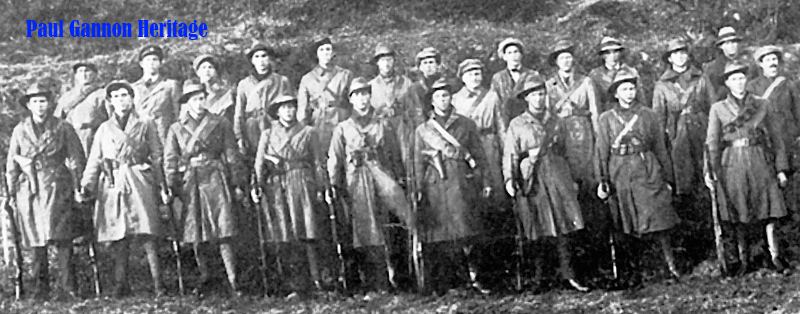Sir Henry Lawson, a Lieutenant General in the British Army during the Anglo-Irish war, assessed the type of man who formed the nucleus of the IRA in the countryside as follows.
“The Captains of volunteers appear to almost all have been quite young men, farmers’ sons for the most part, some of them schoolmasters, most with what for their class, must be considered a good deal of education, ignorant however of the world and many things, but as a class transparently sincere and single minded idealists, highly religious for the most part and often with an almost mythical sense of duty to their homeland. These men gave to the task of organising their volunteers their best in mind and spirit. They fought against drunkenness and self-indulgence and it is no exaggeration to say that as a class, they represented all that was best in the countryside. They and their volunteers were trained to discipline, they embibed the military spirit, the sense of military honour etc. and then as now, they looked upon their army as one in the very real sense, an organisation demanding implicit obedience and self abnegation from rank to rank. The Irish Republican Army seems to be particularly free of ruffians of the professional type and the killings of police and others sometimes under circumstances which evoke our horror, were almost certainly done by members of the IRA acting under military orders, young men imbued with no personal feelings against their victims, with no crimes to their record and probably then, shedding blood for the first time in their lives. Behind their organisation lies the spirit of a nation”.
My uncle Gerald became a member of the local IRA unit in his area at the tender age of seventeen. During the first half of the War of Independence, from January 1919 to July 1920 his main operational area was South Mayo where he assisted local IRA units along with Jack ‘the Brigadier’ Conneely from Clifden and Pete McDonnell and Jack Feehan from Leenane. Some of these operations were led by Ernie O’Malley. There was little or no activity in West Connemara at this time. Gerald understood that if a concerted effective military campaign was to be launched against Crown forces and police in the region, then there was a need to train a select bunch of men in the art of soldiering with particular emphasis on guerilla warfare. When GHQ reorganised the West Connemara Brigade into four battalions in late 1920, Gerald was appointed OC of the 4th battalion. Gerald was a natural leader. He was a very intelligent self-educated man, forever reading when he got the chance. He was totally dedicated to the cause and was all the time organising. He was extremely disciplined. While other lads would use time off to go for a drink, Gerald would be studying books. He drank only the odd bottle of Guinness. After the Civil War he achieved a degree as a solicitor and later as a barrister of law. He became a fluent Irish speaker after spending some time on the Aran Islands. He had great regard for the men under his command. In order to prepare these men mentally and physically for the hard days ahead, he set up an outdoor training camp in an isolated mountain valley near Recess, called Lissoughter. It was a very safe place to train because British Forces would never risk venturing into remote mountainous areas during the war. To this day, Lissoughter is still referred to as “General Bartley’s Republic” by the people who live there. It was from this base that the West Connemara Flying Column operated a lot into South Mayo.
Remembered by Gerald Bartley and written by Paul Gannon
Full Version Available in “The Way it Was”


